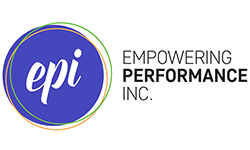Say “Welcome to Our World” with Meaningful Onboarding
Back in the day, onboarding mainly meant doing paperwork and sitting down with a boring employee manual. All too often the attitude was along the lines of “Read this, then go be an amazing employee.” Sometimes your manager would introduce you to a stream of people, many of whom you’d never talk to again.
My first real job was in retail. I filled out the requisite paperwork and was then let loose on the sales floor without the benefit of even rudimentary training on the cash register. At another early job, I arrived at work to find I had a place to sit but no computer or desk phone (yes, this was in olden times when cell phones weren’t ubiquitous).
But in the latter situation I had a very welcoming boss, which made a huge difference. I didn’t care that they obviously weren’t quite ready for me, because my new boss spent time with me. Quality time. We started getting to know each other. It was the beginning of a solid working relationship that led to a seven-year tenure.
And that’s the crux of onboarding: building relationships.
This is the fundamental distinction between onboarding and orientation. Orientation often happens over the course of one day; it’s learning the general lay of the land, with a few quick meet-and-greets thrown in. Onboarding (which includes orientation as one small part) is how we prepare new employees for their crucial role in the organization. The importance of the socialization and relationship-building pieces can’t be overstated.
Done right, onboarding helps people find a meaningful place in the company universe. It's a way to say, "Welcome to our world" and mean it. Of course, there is training involved; it’s an essential part of onboarding. But onboarding should be an ongoing process of individual development that happens over days, weeks, or even months.
Orientation at a new job boils down to what you need to know to survive. Onboarding is what you need to know to thrive.
We’re currently working with several clients to bolster their onboarding processes. And we are onboarding a new EPI team member. These synchronous events have reminded me of the following tips for successful onboarding:
Prepare for a new person’s arrival. Have technology, workspace, email, phone, etc., ready from the get-go.
Have someone warmly welcome new people on their first day. And have the initial welcomer touch base throughout that day and the upcoming days. You don’t want the new person to feel like a burden that must be quickly handed off.
Avoid cognitive overload. Don’t throw everything at someone at once. Help them understand what they need to know, not everything there is to know. That comes over time.
Be patient and empathetic. Everyone needs time to acclimate to a new job.
Do whatever you can to make the person feel they’ve made the best possible decision to join your organization.
Encourage questions to help them understand the organization, its culture, and how they fit into it.
If possible, have a meaningful task or project ready so they can start contributing value. (Remember, “purpose” is one of Daniel Pink’s “trifecta of intrinsic motivators.”)
Share company stories and personal anecdotes to help new hires connect with current team members. Encourage socialization by arranging lunch for the whole team the first day or beyond.
Provide an ongoing mentor (or better yet, a cross-generational mentor). If your new hire is older, try to pair them with someone younger; if they are younger, pair them with someone older. You want to encourage a reciprocal flow of information and insights, with someone who probably feels safer than a new boss.
When you’re busy, it may be difficult to give onboarding the time and attention it deserves. But it’s important work, vital to the success of your team.
Ignoring or rushing onboarding has a costly domino effect.
The consequences can include increased turnover, which is expensive in and of itself, and workplace loneliness, which affects team morale, engagement, and performance.
Intentional and deliberate onboarding signals to your new person that they are worth the effort. And it’s a term that makes perfect sense to me: You’re bringing someone on board—and on board with—your organization and its culture. Hopefully, for the long term. Isn’t that worth the time, for everyone?
-Michelle Kelly, CEO (Chief Enjoyment Officer)
EPI Happenings
May has been a busy month for EPI. Our fearless leader, Michelle, spent her birthday at the TeamWomen Leadership Conference with a lot of other fabulous women. But most importantly, we gained a new team member and advanced a long-time one.
* * *
Deanell Sandoval, a person many of you have had the honor of working with, is EPI’s new President. She will be co-leading EPI with Michelle Kelly, our CEO. She’s been with us for over 15 outstanding years . Reach out to Deanell if you’d like to send her best wishes or simply connect. Here’s what she has to say about her tenure at EPI:
“Fifteen plus years is a long time to stay anywhere. But it’s a continuing honor to work at EPI. I’ve had so many opportunities for personal and professional growth and I’ve enjoyed helping our clients and their employees grow as well. What has really kept me going through the years of hard work, change, high points, and, yes, challenges, however, is the wonderful people who have shared this journey with me. Their dedication, creativity, curiosity, and commitment make me so proud to be a part of the EPI team.”
* * *
And Siobhan Ehle, our new VP of Leadership Development, came aboard in mid-May. She has years of experience in team leadership, leadership development, coaching, and consulting, and we couldn’t be more thrilled to have her on the team. Here’s what she has to say about joining EPI:
“My first weeks at EPI have been full of inspiration. I’m blown away by this team’s world-class work, deep caring for people, and commitment to the success of our clients. The team brings a proactive mindset to leading through the seismic shifts we’re experiencing in technology and work culture. I feel so welcomed! And I’m thrilled to help create workplaces where people do their best work and organizations succeed with EPI’s team and incredible clients!”
Recommended Reading
Switch: How to Change Things When Change Is Hard
by Chip Heath & Dan Heath
I’m currently rereading one of my favorite books on change: Switch. With all the change happening around us, it’s a good time to revisit this research-based standard on how to effect transformative change.
And I’m finding it as thought-provoking as I did the first time around. As usual, the Heath brothers use a story-driven narrative to drive home their message, which makes for a compelling and engaging read.




